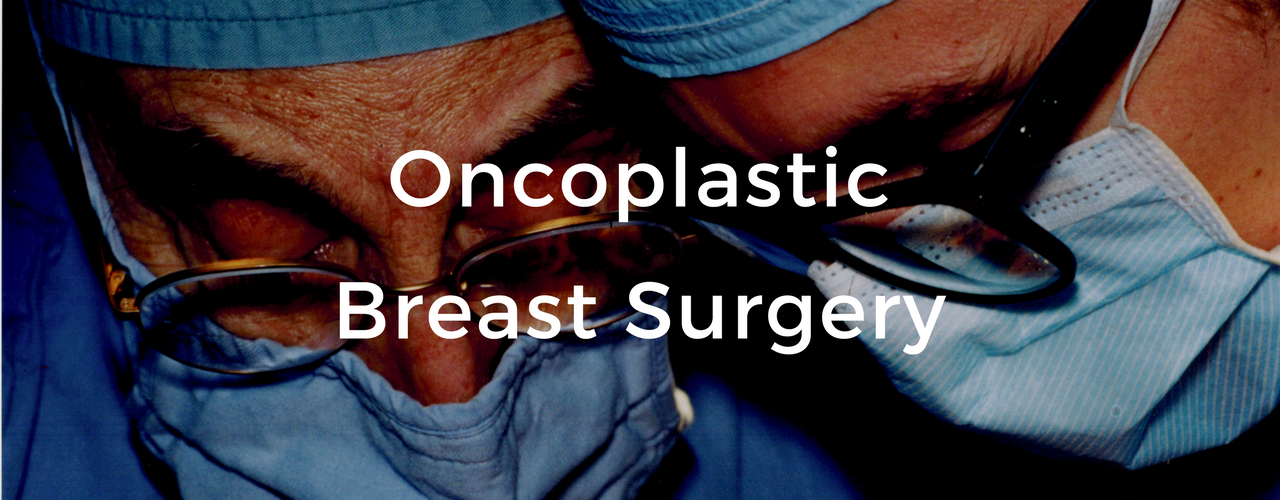Questions for your Breast Cancer Surgeon:
- Do you use “Oncoplastic techniques” for better cosmetic outcomes?
- What can we do to avoid a deformity or asymmetry of my breasts after a lumpectomy and radiation?
- Will you try to make my breasts look better after my cancer surgery than they do now?
Do you use “Oncoplastic” techniques?
This question begins an important conversation with your surgeon. Good cosmetic outcomes with lumpectomy and breast conserving surgery are difficult to achieve in some patients. Oncoplastic surgery integrates breast cancer and plastic surgical techniques. The goal is to achieve better cancer and cosmetic outcomes in patients that require a lumpectomy.
Talk to your breast surgeon about their expectation for your breast shape and symmetry after a lumpectomy and radiation therapy. If they have taken the time to learn oncoplastic surgical techniques, they will be keenly interested in the best cosmetic outcome possible. You must understand your expected cosmetic outcome as well as cancer outcome in order to make informed decisions regarding your breast cancer surgical options.
What does “Oncoplastic” mean?
This term was coined to describe combining breast cancer (“onco-”) surgery with plastic (“-plastic”) surgical techniques to achieve better cancer and cosmetic outcomes. The field was pioneered and promoted in the United States by breast surgeon Dr. Melvin Silverstein at Hoag Breast Center in California. He has promoted these techniques to other surgeons nationwide to achieve better cosmetic outcomes for breast cancer patients.
These methods are not universally utilized or taught to all surgeons during their surgical training. More and more breast surgery fellowships and general surgery residencies are teaching oncoplastic surgery to newly trained surgeons.
Do I need an “Oncoplastic” breast surgeon?
No. Less than 20% of breast surgeons utilize oncoplastic techniques. This approach generally applies to less than 50% of patients who are candidates for a lumpectomy. You can still achieve a good cancer and cosmetic outcome in most instances with a good breast surgeon.

Wall Street Journal (July 1, 2008)
What can we do to avoid breast asymmetry?
Excellent breast cancer surgeons learn to anticipate and try to avoid permanent cosmetic lumpectomy defects. Unfortunately, what is often left out of the surgical discussion is the fact that removing a portion of the breast can result in a significant size difference and can sometimes distort the shape of the breast. It is important to ask your surgeon how much change in appearance of your breast will result from your planned lumpectomy and subsequent radiation therapy.
The change in some can be significant and possibly disappointing once everything heals from lumpectomy surgery and breast radiation. Up to 20-30% of patients are dissatisfied with the appearance of their breast after treatment. Our suggestion is to ask your surgeon what can be done at the time of your lumpectomy to avoid asymmetry or a deformity when everything heals after your surgery and radiation are completed.
Can we make my breasts look better than they do now?
Most newly diagnosed women do not prioritize achieving a great cosmetic outcome in their initial discussions with their surgeon. There are opportunities that can offer options to achieve better cosmetic outcomes than they had before cancer surgery. For example, some women with very large breasts have always desired a breast reduction for a better appearance and to lessen discomfort. These patients may be able to undergo a formal breast reduction or a smaller breast lift on both breasts at the time of their breast cancer lumpectomy. Such oncoplastic procedures are generally covered by insurance as a part of your cancer care.
Patient Friendly References:
Their page (here) on “Oncoplastic Surgery” is a nice overview. This site is created for patients by the American Society of Breast Surgeons.
This YouTube video (here) is an excellent overview of the principles of oncoplastic surgery. The School of Oncoplasitc Surgery provides education and courses for breast surgeons to learn oncoplastic techniques.
This Wall Street Journal article (here) “New Surgery Eases the Toll of Breast Cancer” is an excellent overview of oncoplastic surgical techniques.
More Detailed References:
This detailed document (here) “Oncoplastic Breast Reconstruction: Guidelines for Best Practice” outlines oncoplastic surgery for breast surgical teams. Some details such as complications are described. The Association of Breast Surgery is an association representing healthcare professionals treating malignant and benign breast disease in the UK, Ireland and worldwide.



